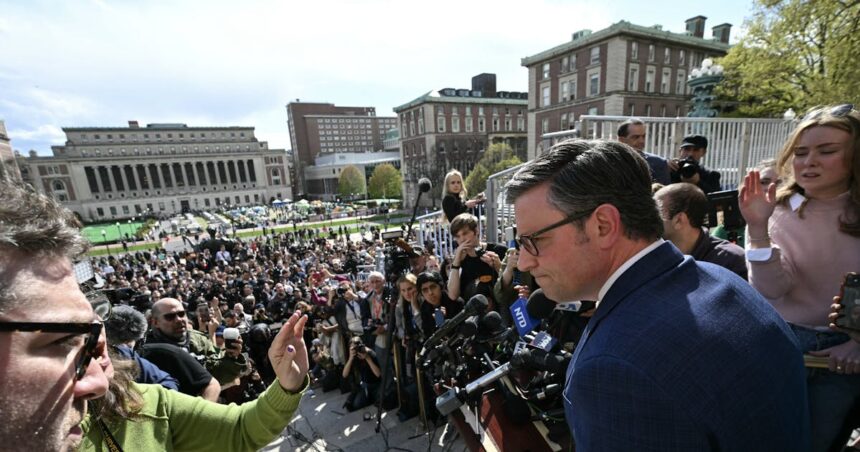
Since most voters are not on college campuses, it is easy for TV to portray any large demonstration as a reenactment of the Russian Revolution. On Fox News, before Johnson’s press conference, there was talk about dreaded “outside agitators,” those amorphous villains who in the 1960s were blamed for triggering civil-rights protests. But beyond Fox, we are also dealing with the journalistic conventions of the news media, which could make 100 arrests on a campus of, say, 15,000 students seem like an alarming breakdown of authority.
As someone who was on the University of Michigan campus during the 1960s, I have an innate sympathy for most student protests, as long as they don’t turn violent or harass individual students. The lessons of the 1960s for both administrators and protesters are rooted in a sense of patience, a willingness to search for common ground, and an intense resistance to calling in the police unless people are being harmed rather than merely inconvenienced. Put another way, the funding threats from eleven angry major donors will cost a university in the long run a lot less money than wall-to-wall national publicity over student upheavals on campus.
The Columbia riots of 1968, part of a wrenching year-long narrative of assassinations and upheaval, were made to order for Nixon, who was fighting Nelson Rockefeller on the left and Ronald Reagan on the right for the GOP nomination. Before the Oregon primary, Nixon made a major speech in which he called the uprising at Columbia “the first major skirmish in a revolutionary struggle to seize the universities of this country and transform them into sanctuaries for radicals and vehicles for revolutionary political and social goals.”

